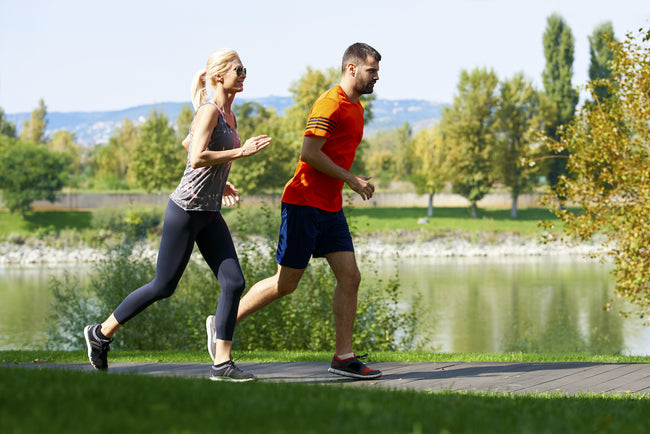You love your fur baby… and you can’t stand it when they’re not OK. You do everything you can to keep them healthy and happy. But even the most perfect pet parent has to contend with occasional emergencies and unexpected vet visits.
There are just some things that are hard—maybe impossible—to avoid. And some things you’d only be aware of if you were a vet yourself. But as long as you know what those are and what to do about them, you’ll be able to take the best possible care of your dog.
So here’s a list of 7 important things you can do to keep your dog safe this season.
1. Don’t leave your dog in the car.
You know dogs die in hot cars. But what you may not realize is that even comfortable weather can lead to overheated cars… or that being too cold can hurt your dog too. When it’s a pleasant 72 degrees outside, your car can quickly hit more than 115 degrees inside in less than an hour, possibly leading to heat stroke.[1] And keeping a window open won’t do much to offset that heat effect.
On the flip side, when the outside temperature drops into the 50’s and below, your car can get very cold very quickly. That can spell hypothermia for some dogs, especially indoor-only and very small dogs.
So even if you leave windows cracked, and even if you think it’ll just be a few minutes, being stuck in the car could spell danger for your dog even if the weather seems nice outside. They’re safer staying at home than being left in a closed car… even if they hate being without you.

 Want to listen instead of read?CLICK HERE 2. Use caution on hiking trails.
Want to listen instead of read?CLICK HERE 2. Use caution on hiking trails.
You and your dog love to hike together, and it’s great for them. But it also presents some unintended potential dangers that you’ll need to keep an extra eye on to make sure your pup stays safe.[2] Hiking gives your dog the opportunity to get into fallen leaves, which can be full of harmful bacteria and mold. They may also come across many things that can cause harm, like:
- acorns
- animal carcasses
- wild mushrooms
- fallen fruits, which can get fermented or moldy
They may also be exposed to much larger populations of fleas and ticks, so make sure to check them carefully once you get done with your hike.
3. Be aware of pesticide exposure.
Whether it’s going to the park, hitting the hiking trails, or just walking around the neighborhood, your dog could be exposed to a lot of pesticides. It gets on their paws and sticks to their fur. And when they lick those areas, they’re ingesting poison. Plus, if your dog chews on grass, twigs, or mulch they could be consuming pesticides as well.
Try to avoid areas that have just been sprayed—that’s when the risk is highest. But even low levels of pesticides over time can mess with your dog’s health, especially their gut microbiome (the trillions of bacteria in their gut). After walks you can wipe down your pet’s paws to clear off any residue, give your dog access to plenty of fresh clean water, and call your vet if you notice any concerning symptoms.
4. Don’t give your dog harmful foods.
You may love to share with your dog, but sharing certain foods can be dangerous or deadly for your BFF. Make sure to never give your dog any of these toxic foods:[3]
- chocolate
- raisins
- grapes
- avocados
- nuts, especially macadamia nuts and salted nuts
- xylitol (a sweetener used in candy and gum)
You’ll also want to pay attention to any foods that make your dog sick with diarrhea or vomiting. Some dogs have more sensitive digestive systems, so avoid feeding anything that makes them ill. Common foods that many dogs’ digestive systems can’t handle include citrus fruits, dairy products, onions, corn, and soy products.
If you know your dog has eaten something dangerous, contact your vet or call the ASPCA Animal Poison Control Center at 888-426-4435 immediately.

5. Keep your dog hydrated.
Dogs can get dehydrated very quickly, and it doesn’t take a long walk on a 90-degree day to do it. Research shows that dogs begin to get dehydrated within just 15 minutes of exercise.[4] Any kind of extra fluid loss, like diarrhea or vomiting, can also increase the risk of dehydration.
Puppies, seniors, and toy breeds tend to get dehydrated more easily. And though your dog may have plenty of access to fresh water, not all dogs will drink without some kind of encouragement. If your dog isn’t a water drinker, try giving ice cubes as treats or rewarding them for drinking to make sure they stay hydrated throughout the day.
So how can you tell if your dog is getting dehydrated? Early signs include loss of appetite, panting, dry nose, and thick saliva. You can also do a “pinch test,” gently pulling up some skin near your dog’s shoulder blade. If your dog is well hydrated, that skin will instantly go right back into place… but on a dehydrated dog it will take noticeably longer. If your dog shows persistent signs of dehydration, contact your vet.
6. Help your dog feel safe during fireworks and thunderstorms.
Many dogs react badly to sudden loud noises, like fireworks and thunderstorms that don’t just occur during the summer months. Their hearing is sharper than ours, so noises that bother us can be even more upsetting for your dog.
So how can you help your dog when things get loud? While it may be your instinct to soothe and pet your pup when they are anxious and afraid, this can actually serve to reinforce the behavior. Instead, give them a distraction like a toy or puzzle game to play with, talk in a calm soothing tone, and pile on the white noise like TV or fans to help drown out those sudden bursts.

7. Support your dog’s gut microbiome.
Your dog’s gut microbiome contains trillions of bacteria. And when their gut is in healthy balance, beneficial probiotic bacteria greatly outnumber harmful pathogens.
Unfortunately, it’s pretty easy to knock that microbiome out of balance, especially if your dog has eaten something they shouldn’t. And when your pup’s gut is out of balance—a condition called dysbiosis—pathogens outnumber probiotic bacteria. That can cause some nasty GI (gastrointestinal) issues like extremely smelly gas and diarrhea.
But it can also trigger many seemingly unrelated issues like:
- itchy skin
- allergies
- food sensitivities
- bad breath
- low energy
- anxiety
Luckily, it’s easy to get AND keep your dog’s gut in healthy balance with the right probiotics.[5]
A probiotic supplement specifically formulated for pets was tested in dogs suffering with diarrhea and vomiting… and the results were overwhelmingly positive. Researchers tested a dog-focused supplement that included targeted probiotic strains: Bacillus subtilis HU58™, Bacillus licheniformis, and Pediococcus acidilactici.[6]
Eleven dogs—at different levels of health—each got this probiotic daily for 30 days and here’s what happened:
- GI issues were dramatically decreased or disappeared entirely
- Gassiness was reduced in even the healthy dogs
- No healthy dogs experienced adverse issues
And when your dog’s microbiome is balanced, it affects more than just their gut.[7] It can support a healthy appetite and energy levels, ease occasional anxiety, and keep your dog healthier and happier in general.
Just Pets Probiotic Keeps Your Dog’s Gut Safe Year Round
Just Pets Probiotic helps keep your dog’s gut microbiome in balance every day. And a healthy gut means a safer, happier pup, no matter what else is going on.
Just Pets Probiotic contains three clinically studied dog-friendly probiotic strains:
- Bacillus subtilis HU58™
- Pediococcus acidilactici
- Bacillus licheniformis
This probiotic trio is known to effectively keep your dog’s gut healthy, comfortable, and thriving.
Simply add one capsule of Just Pets Probiotic to your dog’s food every day for a safe, happy pup.
>> Give your pet’s gut the TLC it needs with Just Pets Probiotic.
Not sure about trying Just Pets Probiotic for your dog? We can help with that.
You can test drive Just Pets Probiotic to see if it works well for your dog… and we’re confident that it will.
But if for any reason you don’t notice a positive difference, you can ask for a full product refund at any time… no questions asked.
That’s because EVERY Just Thrive purchase is covered by our hassle-free, Bottom of the Bottle, 100% money-back guarantee. Meaning you can try Just Pets Probiotic to see how it works for your pup, and if you’re not tail-waggingly in love with the results, you get your money back… Even if it’s 3 months or 3 years later. Even if the bottle is empty!
>> Try Just Pets Probiotic 100% Risk Free Today, and save 30% with a subscription.
Resources
- Teichmann S, Turković V, Dörfelt R. Hitzschlag bei Hunden in Süddeutschland. Eine retrospektive Studie über 5,5 Jahre [Heatstroke in dogs in southern Germany. A retrospective study over a 5.5-year period]. Tierärztliche Praxis Ausgabe K: Kleintiere/Heimtiere. 2014;42(4):213–222. PMID: 25119629.
- REI. Hiking with Dogs: Expert Advice. Accessed August 16, 2023. https://www.rei.com/learn/expert-advice/hiking-dogs.html
- ASPCA. People Foods to Avoid Feeding Your Pets. Accessed August 16, 2023. https://www.aspca.org/pet-care/animal-poison-control/people-foods-avoid-feeding-your-pets
- Goucher TK, Hartzell AM, Seales TS, Anmuth AS, Zanghi BM, Otto CM. Evaluation of skin turgor and capillary refill time as predictors of dehydration in exercising dogs. Am J Vet Res. 2019;80(2):123–128. doi: 10.2460/ajvr.80.2.123. PMID: 30681353.
- White R, Atherly T, Guard B, Rossi G, Wang C, Mosher C, Webb C, Hill S, Ackermann M, Sciabarra P, Allenspach K, Suchodolski J, Jergens AE. Randomized, controlled trial evaluating the effect of multi-strain probiotic on the mucosal microbiota in canine idiopathic inflammatory bowel disease. Gut Microbes. 2017;8(5):451–466.
- Matei MC, Andrei SM, Buza V, Cernea MS, Dumitras DA, Neagu D, Rafa H, Popovici CP, Szakacs AR, Catinean A, Stefanut E, Stefanut LC. Natural Endotoxemia in Dogs - A Hidden Condition That Can Be Treated with a Potential Probiotic Containing Bacillus subtilis, Bacillus licheniformis and Pediococcus acidilactici: A Study Model. Animals (Basel). 2021;11(5):1367.
- Schmitz S, Suchodolski J. Understanding the canine intestinal microbiota and its modification by pro-, pre- and synbiotics - what is the evidence? Vet Med Sci. 2016;2(2):71–94. doi: 10.1002/vms3.17. PMID: 29067182; PMCID: PMC5645859.











